Humans don’t have a monopoly on stylish facial hair. In fact, there are many different kinds of animals that sport beards that could make even the most rugged mountain man jealous. Animals may not have access to the same kind of grooming equipment and fancy hair care products that people do, but that doesn’t mean they can’t look sharp. In many cases, this pronounced facial hair growth also serves a critical survival function aside from maintaining a unique aesthetic.
Beards signal high testosterone levels and attract mates in some animals – such as lions, orangutans and some goats. Goats even lick and groom their beards to keep them looking clean to appeal to females. Other animals, such as bison or the endangered markhors, a species of goat, sport beards in order to increase their insulation and keep themselves warm during cold seasons.
#8 Bearded Dragon

©Ken Griffiths/Shutterstock.com
When you think of a bearded animal, the Australian bearded dragon is probably one of the first things to come to mind. While they don’t exactly have facial hair, they do have a cartilaginous growth on their chin that is called a beard. The beard actually serves as a primary mode of communication with other members of the species. The dragons can change the color of the beard and bob or turn their head to display it as a way of showing dominance or threatening other adults.
These warm-weather reptiles are most often found in the desert and savanna regions in Oceania. Adults can grow up to 2 feet long and have a variety of skin colors, including brown, yellow, and green. They primarily feed on insects and can reach speeds up to 25 miles per hour as they scamper after their unfortunate prey.
Check out more interesting facts about bearded dragons and their ferocious hunting habits here.
#7 Lion

©iStock.com/Anca_Liliana
As is suited to their royal position in the food chain, adult lions often have a beard fit for a king. Technically, this growth is called a mane and extends along their neck up to their head and down around their chin. This eye-catching crown of fur only adds to the ferocity and intimidating visage of one of nature’s fiercest predators. Mane size can be a factor in intimidating other pride members into obedience or winning the affections of a mate.
Since mane growth is likely associated with testosterone levels, usually only the senior male in a group has a prominent one. However, female lions have been known to grow them during the prolonged absence of a male in the pride. Males tend to be territorial and competitive to the point of death, so the total lion population is predominantly female.
Learn more about the life of Asian and African lions here.
#6 Goat
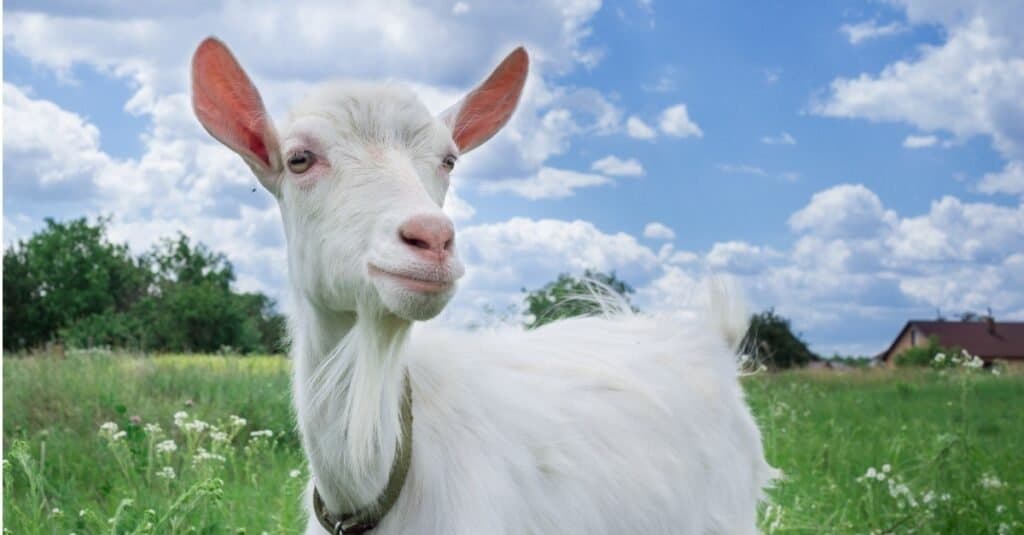
©iStock.com/VeraOsco
Along with the bearded dragon, goats are another option that may spring to mind immediately when someone asks about a bearded animal with serious facial hair. In fact, this is where the goatee-style beard sported by some people gets its name. Adults from many different goat species can grow a distinct tuft on their chin that can get remarkably long and can really set an individual apart from their flock.
Check out more resources to learn more about goats and their goatees.
#5 Markhor
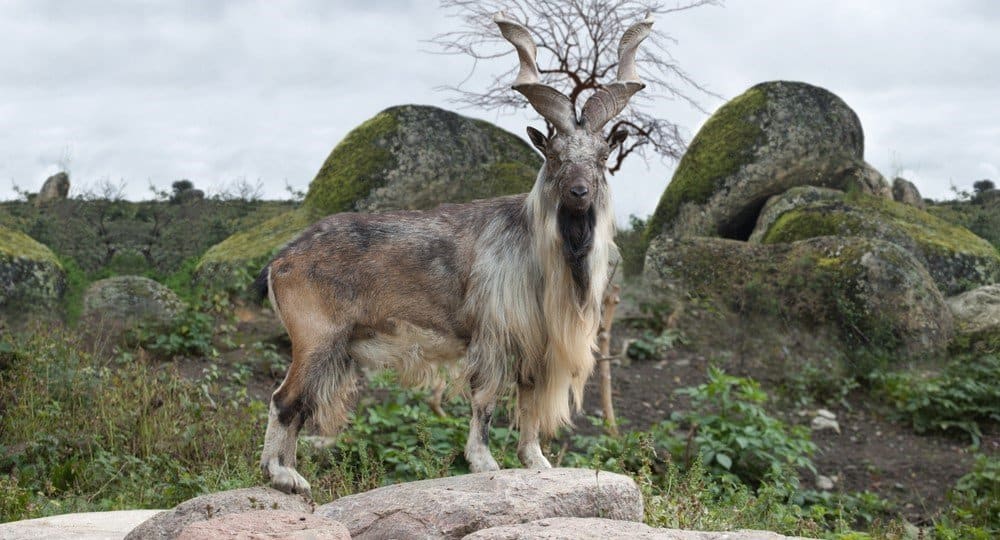
©Igor Boldyrev/Shutterstock.com
The markhor is related to goats but is distinguished by their remarkable twisted horns and longer hair. Their beards can grow as a different color than the rest of their cost and be over a foot in length. They are herbivorous herd animals that survive by grazing on grasses throughout their native range, which extends from India to Turkey and avoiding predators with their fancy footwork.
Once considered a prize target and a particularly challenging animal to hunt, the markhor is now a rare sight in the hilly and mountainous portions of their native habitat. Unfortunately, these majestic animals are now considered endangered, with a wild population estimated at less than 3000 individuals.
See pictures and find more facts about the majestic and elusive markhor here.
#4 Bearded Pig
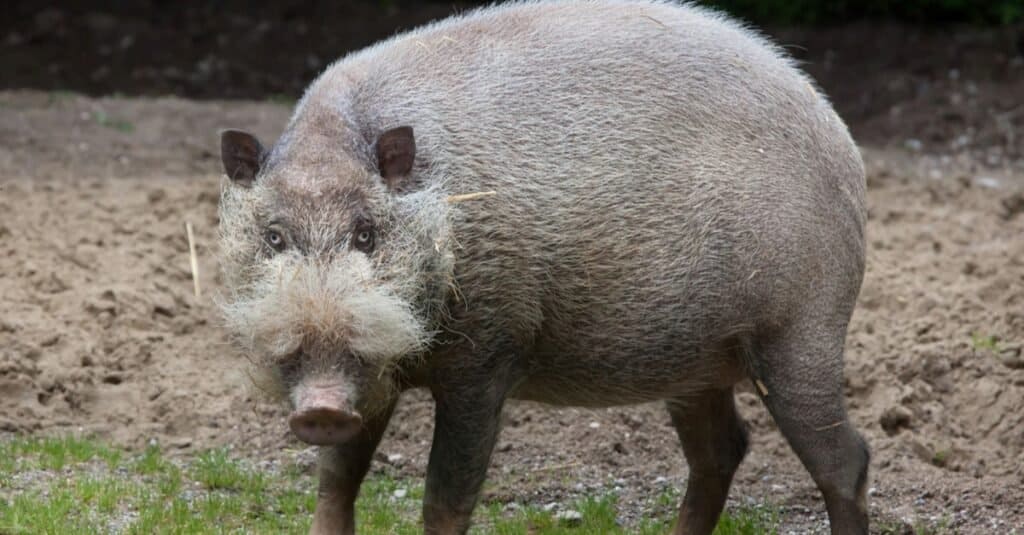
©Vladimir Wrangel/Shutterstock.com
As its name suggests, the Bornean bearded pig can thank its prominent facial hair for its illustrious name. A motley array of coarse whiskers growing from around its mouth weave together into a beard that can rival just about any other in the animal kingdom. These pigs are common on Borneo but are also found on various islands in the Malaysian region and the Philippines.
#3 Bison

.
©iStock.com/Jillian Cooper
It’s only fitting that some of the largest beards in North America belong to some of the largest animals in North America. These massive herbivores are known for their distinctive, shaggy facial hair that often forms into a sizable beard draping from their chin. Their thick beard along with their rough fur coat helps insulate these animals as they trek across the colder wilderness regions of the United States and Canada.
Head here to learn more about the most massive mammal native to North America.
#2 Walrus
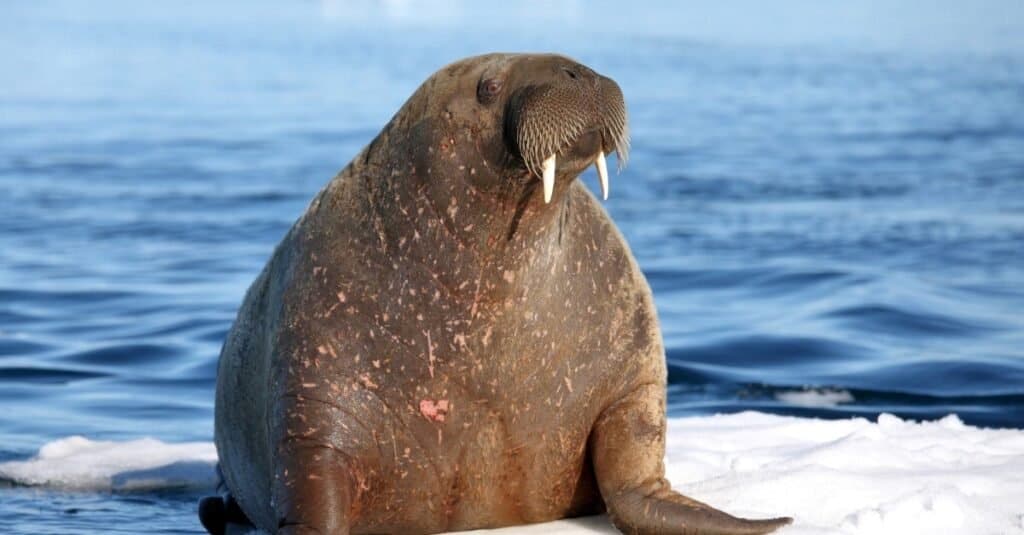
©iStock.com/zanskar
While not technically a bearded animal, it’s hard to ignore one of the most powerful mustaches in the world. The walrus is definitely known for its mustache, but this growth can often extend down past their mouth into a beard of sorts. These whiskers, which are actually called vibrissae, are extremely sensitive to vibrations. They serve a critical function in locating elusive food sources, including worms and shellfish, in the frigid Arctic environment that they inhabit.
Read more about the tusks, mustaches, and lifestyle of the walrus right here.
#1 Orang-utan
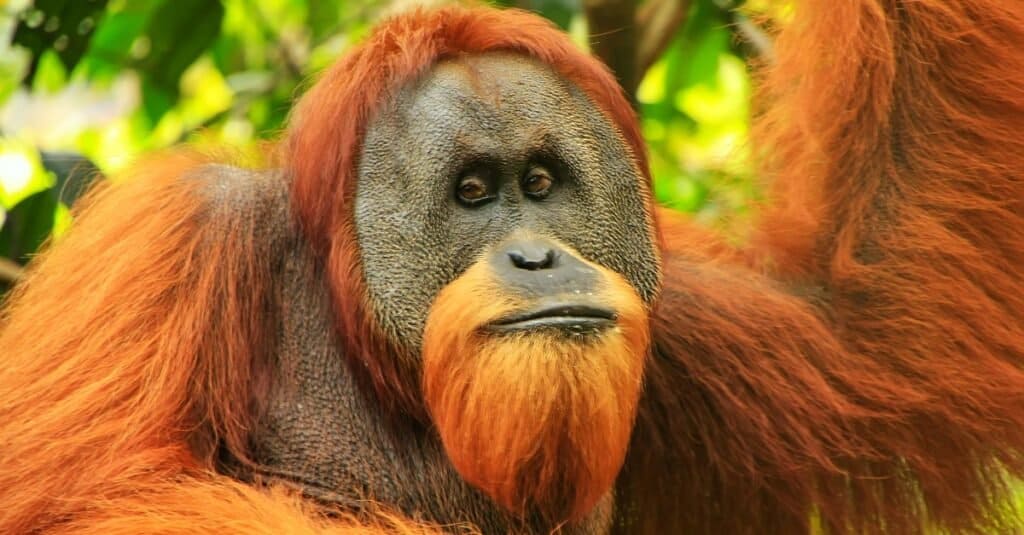
©Don Mammoser/Shutterstock.com
As one of the largest primates in the world, orangutans can also grow a serious beard to rival most other animals. Members of the Sumatran sub-species are known to have a bit longer beards than their Bornean counterparts, but all of them are adept climbers and know their way around a tree. These animals are omnivores that forage bugs, fruit, and other types of food from trees, although they are more solitary than many of their primate cousins.
Brush up on your orang-utan game here with plenty of facts, figures, and pictures.
Summary List
Up Next…
- Bearded Dragon Lifespan: How Long Do Bearded Dragons Live?: These mini-dragons make great pets – but how long can you expect to enjoy life with your bearded companion?
- How Long Do Lions Live: The Oldest Lion Ever: Lions are at or near the top of the food chain in the wild – find out how long these majestic creatures live to rule!
- Are Goats Good Pets?: There’s nothing cuter than a happy baby goat – but do they make good pets? Find out!
- New Study: Orangutans Challenge Decades of Mathematics and Provide Insight Into Origins of Language Itself: Our great ape cousins continue to reveal their intelligence in new and exciting ways. Learn about how orangutans have contributed to our growing knowledge of the origins of language.
Thank you for reading! Have some feedback for us? Contact the AZ Animals editorial team.








